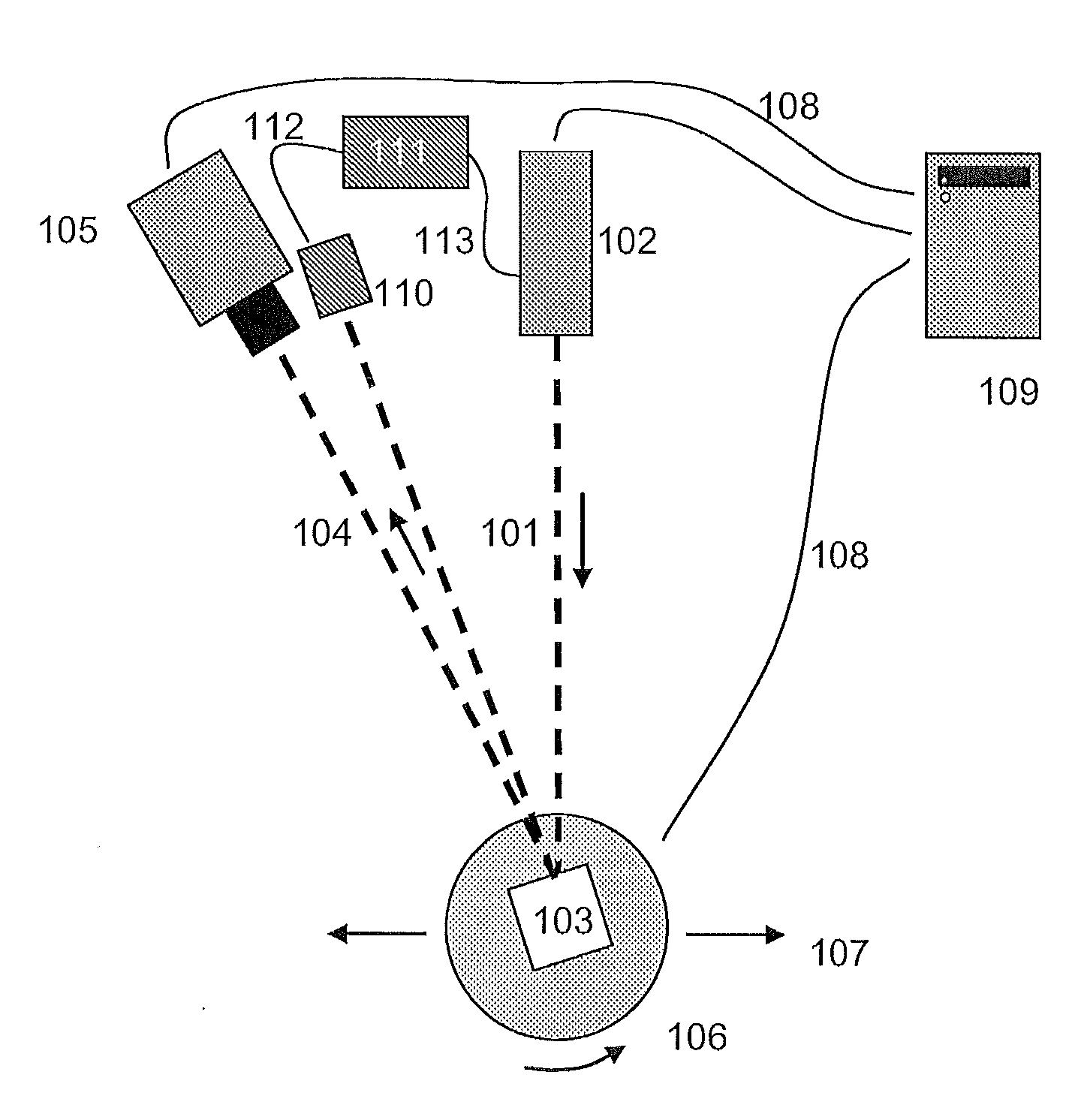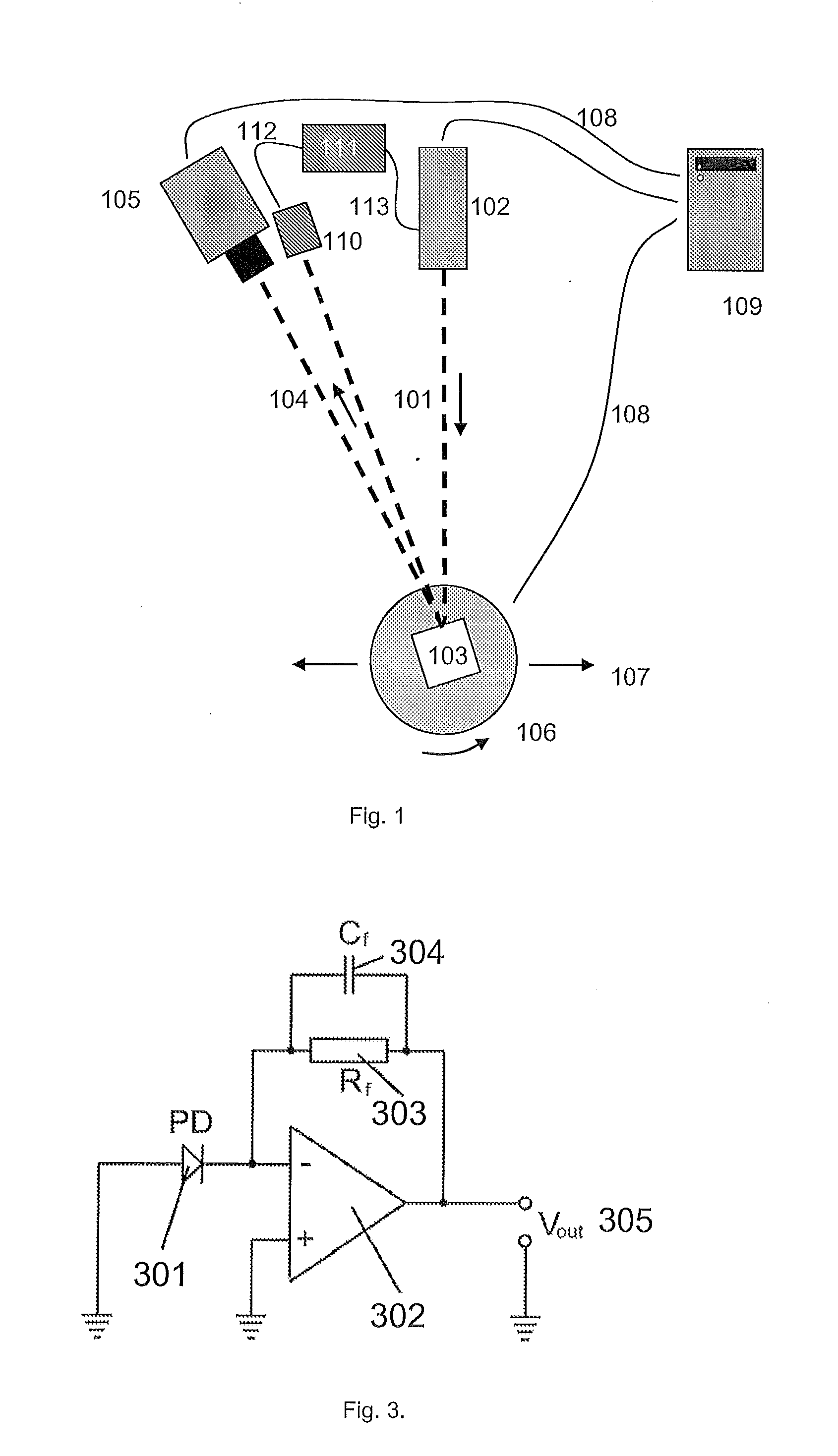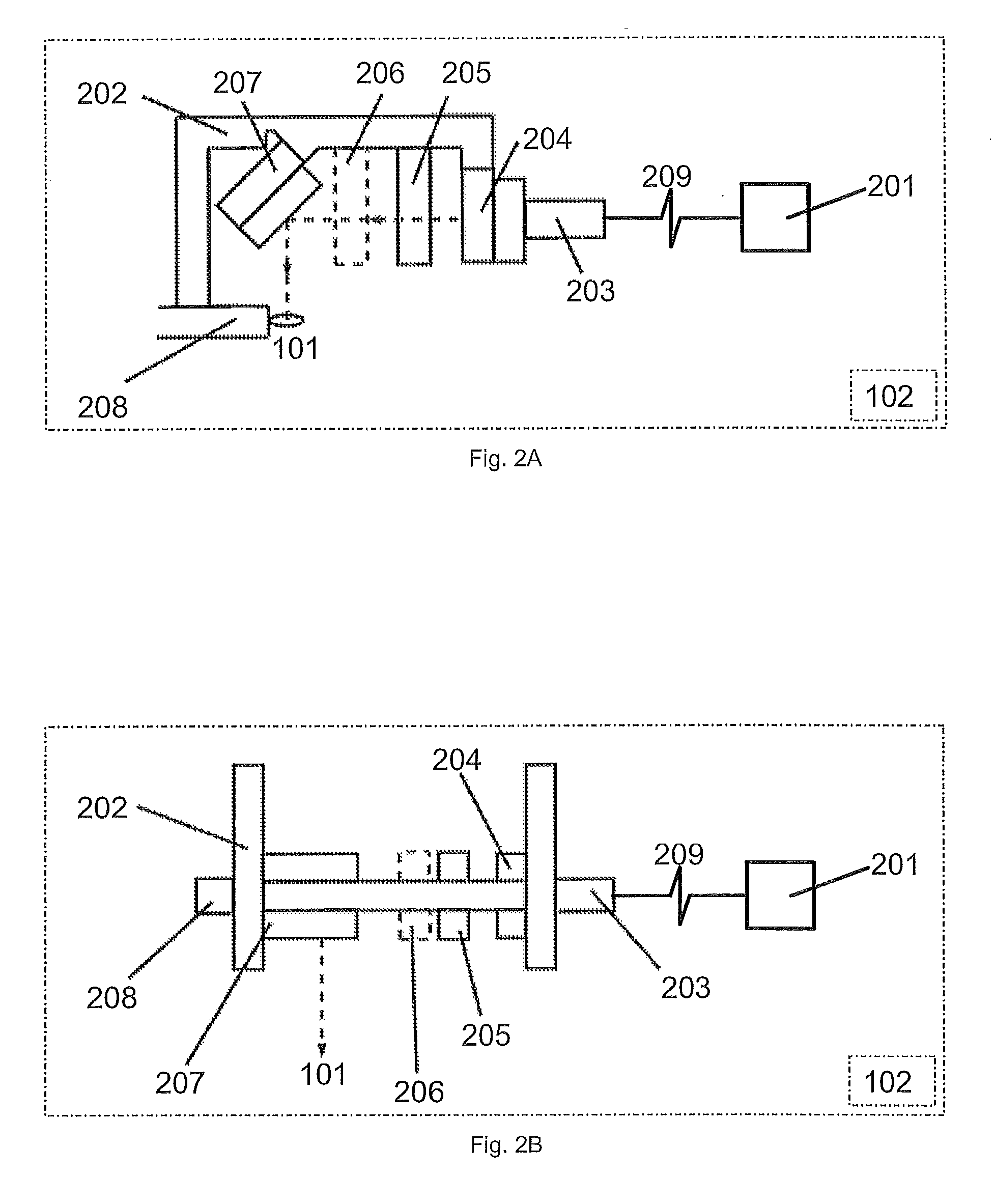Scanner with feedback control
a scanner and feedback technology, applied in the direction of measuring devices, instruments, using optical means, etc., can solve the problems of non-uniform image intensity, inaccurate triangulation, and inability to properly identify beams
- Summary
- Abstract
- Description
- Claims
- Application Information
AI Technical Summary
Benefits of technology
Problems solved by technology
Method used
Image
Examples
Embodiment Construction
[0024]Unlike the optical scanning probe described in WO 2007 / 125081, this invention relies on a single element detector detecting scattered light from a single, continuously moving spot of light. Neither the generated line of light nor the detector(s) are pixellated, and this technique does not rely on spatial information from the camera or photodiode modules. The feedback control is wholly independent of information from the camera image. Neither is this invention necessarily “digital” in the sense the word is used on page 19 of WO 2007 / 125081. Either analogue signal processing electronics comprising discrete components can be used or else a digital version of the feedback control can be realised using a field-programmable gate array (FPGA), application specific integrated circuit (ASIC), a application specific standard product (ASSP) or a PC. A mixed signal circuit implementation would also be an embodiment of this invention.
[0025]One embodiment of the present invention overcomes ...
PUM
 Login to View More
Login to View More Abstract
Description
Claims
Application Information
 Login to View More
Login to View More - R&D
- Intellectual Property
- Life Sciences
- Materials
- Tech Scout
- Unparalleled Data Quality
- Higher Quality Content
- 60% Fewer Hallucinations
Browse by: Latest US Patents, China's latest patents, Technical Efficacy Thesaurus, Application Domain, Technology Topic, Popular Technical Reports.
© 2025 PatSnap. All rights reserved.Legal|Privacy policy|Modern Slavery Act Transparency Statement|Sitemap|About US| Contact US: help@patsnap.com



